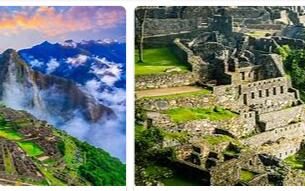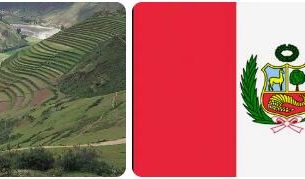Shopping
Overview
Leather items of all kinds (gloves, coats, jackets, purses, etc.), hand-embroidered blouses, woolen items (especially llama wool), decorated mate vessels, silver jewellery, semi-precious stones (onyx, lapis lazuli, tiger’s eye, agate) and guitars are typical of Argentina. Leather goods are sold all over Argentina and can sometimes be found at bargain prices. Local arts and crafts are also often on offer. Chocolates from Bariloche and wines from the province of Mendoza are particularly popular gifts. The many local ferias (fairs) offer an unusual shopping experience. A particularly large and lively event is the annual La Rural agricultural and livestock exhibition in Buenos Aires, where the best agricultural companies and cattle breeders in the country present themselves. Buenos Aires has some very large regular markets. The best place to shop for antiques is at the Feria de San Pedro Telmo flea market on Sundays in Plaza Dorrego. The colorful hippie market in front of the Centro Cultural Recoleta sells handicrafts, jewelery and works of art on the weekends. Unique pieces by promising local designers can be found in the fashion boutiques in the Palermo district. To complement your travel wardrobe with affordable and fun pieces, Florida Street has been partially pedestrianized since 1913 and is home to the largest retail outlets and boutiques. On the weekends, there is a market northwest of Buenos Aires in Tigre, where handmade goods are offered. Pasion Argentina (Internet: www.pasion-argentina.com.ar) offers particularly beautifully crafted textile goods, furniture and clothing, with the proceeds supporting the often forgotten natives. Tierra Adentro in Buenos Aires sells exquisite and fairly traded textiles, home furnishings and silver jewelry made by indigenous people.
- Topmbadirectory: Offers information about politics, geography, and known people in Argentina.
Opening hours
Mon-Fri 09.00-19.00, Sat 09.00-13.00. Many shops close for lunch and opening hours can sometimes be unreliable.
Annotation
The ‘Tax Free’ sign indicates that overseas customers can reclaim the 21% sales tax on all purchases made in the country (website: www.globalrefund.com).
Nightlife
Introduction
Argentines love to party, and even the smallest towns in the rural parts of the country have bars and discos. Buenos Aires has a particularly lively nightlife. New cocktail bars are opening all over the city, and parties on rooftop terraces or by the pool are a must during the spring and summer months. In the numerous theaters and concert halls in the city, international artists of renown make guest appearances. Evening entertainment is also provided by the numerous smaller boites (clubs). The city has long since advanced to become the South American center of clubbing, and world-famous DJs spin in the numerous large discotheques. Fascinating is the tango, a dynamic Argentinean dance, who began his triumphal procession around the world from Buenos Aires. Clubs in all major cities host performances of this intimate art form night after night. Those interested can learn and practice tango themselves in the milongas (tango halls). The district of San Telmo in Buenos Aires with its long-established establishments is particularly well suited to experience the flair of the historic tango halls. If you have the opportunity, attend an Argentine peña – a fun evening of folk music, simple yet delicious food, and lots of dancing and fun. In Buenos Aires, numerous larger peñas take place, especially during the annual agricultural exhibition La Rural.
Culinary
Overview
Restaurants offer a variety of North American, European and Asian dishes. The local cuisine is of Basque, Spanish and Italian origin. All kinds of beef are on the menu.
Regional specialities
Churrasco are the famous steaks, while parrillada means grilled meat, offal and sausages. Argentinian specialties include asado (roast beef), arroz con pollo (stew with rice, chicken, eggs, vegetables and hot sauce), puchero de gallina (chicken, sausage, cornmeal and potatoes), empanada (stuffed dumplings) and queso y dulce (a thick slice of cheese with a slice of quince jelly).
Useful information
The restaurants are excellent, you rarely eat before 9pm. Good restaurants are identified by a three fork sign. Waiters are addressed as “Mozo”.
Tip
The service charge is rarely already included in bills. The staff needs the tip to make a living. 15% is usual, 20% should be given for very good service.
Regional drinks
The refreshing mate tea is the national drink. It is drunk in special cups with a metal straw and passed on to friends. Branded spirits such as whiskey and gin are distilled in local distilleries. The local wines are excellent. Numerous cocktails are mixed from Caribbean and South American rum.
Minimum age for consumption of alcoholic beverages
In Argentina you can drink alcohol from the age of 18.
Accommodation
Hotels
The standard ranges from the luxury class in Buenos Aires to the simplest accommodation in rural areas. Inexpensive hotels can be found in Buenos Aires near Avenida de Mayo. The service is generally very good. All hotel bills include 3% tourist tax, 24% service tax and 15% room tax. Almost all hotels are air-conditioned and many have excellent restaurants. Categories: The Dirección de Turismo sets room rates for all 1, 2 and 3 star hotels, guesthouses and inns; 4 and 5 star hotels set their own prices. The categories are based on standard, service and number of beds. Information from the Asociación de Hoteles de Turismo de la Republica Argentina, Av. Rivadavia 1157/59,
Camping
Motels, campgrounds and trailer parks are almost everywhere. Campers are also welcome in cities. Campers can be rented.
Other accommodation options
Are available in most cities and towns. They are also accessible to non-members of the International Youth Hostel Organization. For details, contact Hostelling International Argentina (RAAJ), Florida 835, 3rd Floor, OF 319, Buenos Aires 1005. (Tel: (011) 45 11 87 12. Internet: www.hostels.org.ar).
Culture
Religion
90% Roman Catholic; 2% Protestant, Jewish and Muslim minorities.
Social Rules of Conduct
Manners: The usual forms of politeness apply. Traditions should be respected. People address each other as Señor or Señora or with their first names – Doña Maria is the name of the neighbor, Don Julio the baker. When greeting friends, kiss each other on the cheek. After a private invitation, it is considered polite to send the hostess a bouquet of flowers the next day. There is a queue at bus stops, in front of cinemas, etc. – queues are extremely unpopular. Clothing: Casual clothing is appropriate almost everywhere, more elegant attire is only expected for official events and in exclusive restaurants. Proper attire is expected when entering churches. Smoking: In Buenos Aires and some other Argentinian cities, public transport, cinemas and theaters are non-smoking areas. In these cities, smoking is banned in all public spaces, including restaurants and bars. The only exceptions to this are cigar clubs and shops. outdoors, e.g. B. on balconies and terraces, smoking is permitted. Alcohol: Although Argentina is known for its excellent wines, Argentines drink significantly less alcohol than Europeans. Non-alcoholic beverages are commonly enjoyed in bars and discotheques and few are noticeably drunk. Tipping is customary and 5 to 10% of the bill is reasonable. Some hotels and restaurants add 25% service and 21% tax to the bill. Taxi drivers expect tips from visitors.
Climate
Best travel time
The climate in Argentina ranges from intense heat and heavy rains in the subtropical Chaco in the north to a pleasant climate in the central Pampas to the subarctic cold of the Patagonian Sea in the south. Almost all climatic zones of the earth are represented in this huge country.
Northwest subtropical, hot and dry, rainy season is in the summer months.
Northeast with a tropical climate very warm and a lot of rain all year round.
The central region has a predominantly temperate climate, but in the summer months, December to February, it is sometimes very hot and humid; the winters are quite cool.
To the south lies the province of Tierra del Fuego, covering the eastern islands of Tierra del Fuego. Maritime climate. In summer it is the coolest part of Argentina with maximum temperatures of around 15 degrees. In winter, temperatures are around freezing. Occasional severe frost. The weather can be very changeable throughout the year.
The regions mentioned have different best travel times: The north is recommended as a travel destination all year round, the northeast from April/May to September, Buenos Aires in the spring and autumn months and in the winter months of the southern hemisphere, Patagonia and Tierra del Fuego in the months of October to April ( high season between December and February) and the mountains of Argentina are suitable for skiing between mid-June and mid-October.
Country data
Phone prefix
+54
Area (sq km)
2780400
Population
45.195.774
Population density (per square km)
16
Population statistics year
2020
Main emergency number
107
Antarctic
Overview
Amidst the solitude of Antarctica, adventure seekers can discover an enchanting, unforgettable landscape. Perhaps nowhere else in the world comes face-to-face with the awesome (and ferocious) force of nature as in Antarctica, with its soaring mountains, massive glaciers and shimmering icebergs. Tourist cruises and ferry excursions to Antarctica are increasing, and accommodation, dining and excursion options are emerging at an increasingly sophisticated level. For example, today there is the possibility to visit the southernmost volcano on earth, Mount Erebus, to climb or see colonies of penguins, seals, albatross and other bird species, and giant whales. Environmentally conscious tourism is of central importance. Perhaps the reason Antarctica is so fascinating is that it symbolizes human endurance and the struggle for survival like no other region on earth. Before Antarctica was first seen (1819), the continent spoken of almost as a myth as Terra Australia Incognita (Unknown Southern Land) was the subject of endless speculation. Even when Antarctica had already been discovered – the first humans set foot there in 1899 – Antarctica seemed an inhospitable and unfathomable piece of earth. In many ways it still is today.
Passport and visa regulations
Entry with children
Since June 27, 2012, children need their own travel document (passport / children’s passport) for trips abroad (also within the EU). Entries of children in the parental passport are no longer possible.
Country data
Area (sq km)
14000000
Population
45.38 million (Source: homosociety)



